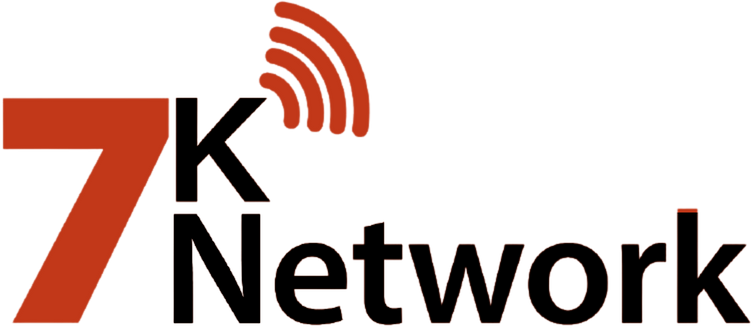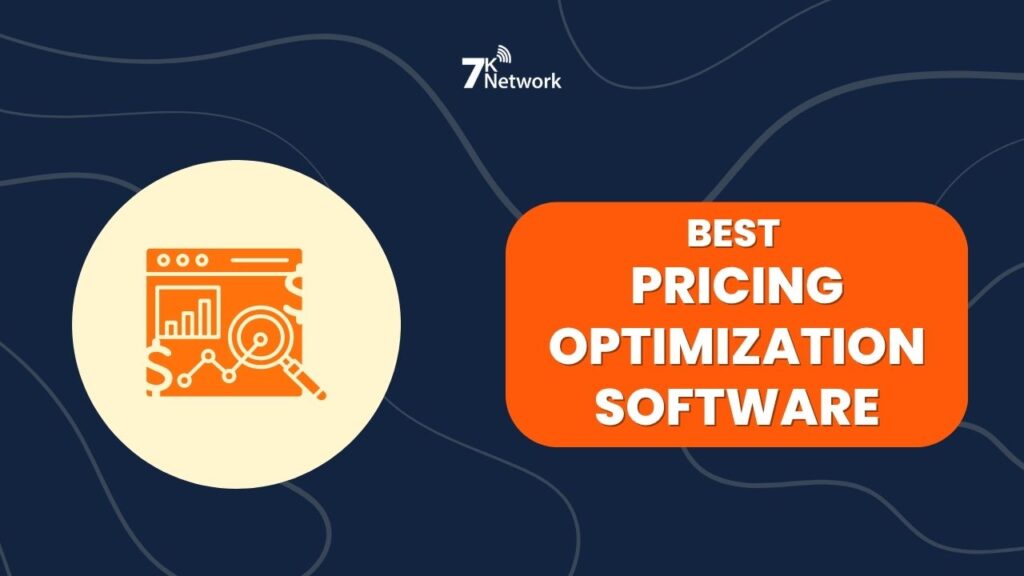In modern dynamic and competitive markets, pricing optimization software has become an essential component of business enterprise that aims at maximizing revenue, improving profit margin, and keeping updated with the market trend. Such tools provide recommendations on dynamic and data-driven pricing across channels, using artificial intelligence, machine learning, and advanced analytics. The following list of the 10 best pricing optimization software programs is thoroughly selected and is aimed to help business decision-makers, such as pricing analysts, revenue managers, marketers, e-commerce leaders, or operations teams.
In retail, B2B, manufacturing, or distribution, these platforms help to make pricing smarter through real-time insights, automation, and system integration. The criteria used to select them are scalability, industry-specific use cases, AI-powered features, ease of use, integration abilities, and ROI. Whether a startup wants flexibility or an enterprise with a complicated pricing model, these tools can be customized to fit most business requirements and the level of digital maturity in their price strategy.
Criteria for Selecting the Best Pricing Optimization Software
The key selection criteria of the best pricing optimization software are the following:
- Industry fit and use case: Choose a tool depending on the type of business- retail, e-commerce, B2B, manufacturing, or distribution. Some tools are designed specifically for certain industries.
- Data integration capabilities: Ensure the software will be compatible with your other systems, like ERP, CRM software, POS, or e-commerce platform, so that data can flow easily and price recommendations will be accurate.
- AI and analytics power: It should be sought with functions such as demand prediction, the modeling of price elasticity, and dynamic pricing facilitated by artificial intelligence to make smart decisions.
- User interface and ease of use: An Intuitive, easy-to-use interface, simple, non-technical team might be a concern. It must also allow pricing, sales, and marketing to work together.
- Scalability and flexibility: The software must scale with your business and must allow you to have several product lines, channels, or geographies.
- Real-time pricing and automation: Choose tools that allow real-time updates of pricing and automation to keep up with dynamic markets.
- Customization and rule-based control: Such features as pricing segments and pricing rules (business-specific) are essential to make the software match your strategy.
- Security and compliance: Make sure that the platform has good data security practices and abides by the appropriate pricing rules and industry regulations.
- Customer support and onboarding: Support and effective onboarding may take much of the load off of the implementation and daily usage.
- Cost vs. ROI: Do not only judge the software by its price, but by how much return it will give you in the long run, in regard to improvement of margin and efficiency.
List of Top 10 Pricing Optimization Software
1. PROS
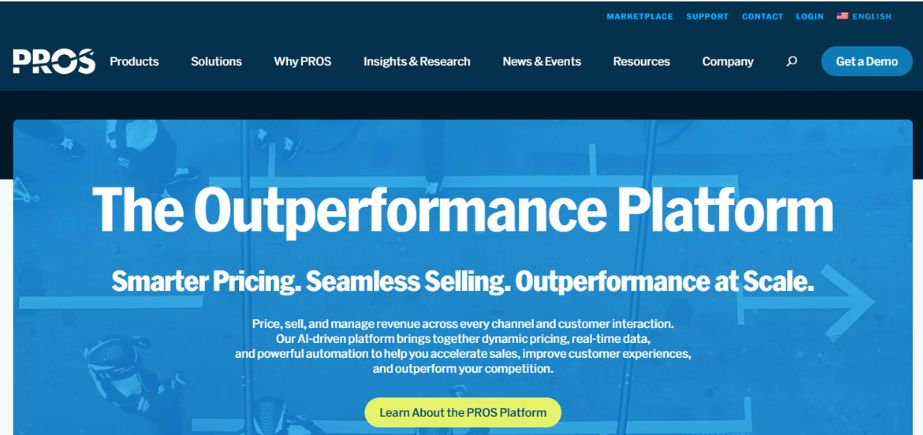
PROS is a leading pricing and revenue optimization platform powered by AI that is applied in the most data-rich, complex industries, including manufacturing,g distribution, and travel. It allows business to dynamically and individually price their goods and services in accordance with real-time market information and consumer behavior. PROS includes such advanced functionalities as price segmentation, forecasting, and CRM/ERP integration. It has a powerful AI core that makes it possible to apply scalable pricing to large portfolios of products. The benefits to the enterprises are increased profitability, sales productivity, and customer experience. It may be complicated to implement, but PROS is best suited to organizations that require enterprise-level solutions for pricing complex environments.
Key Features:
- AI-driven dynamic pricing
- Real-time pricing insights
- Price segmentation and personalization
- Integration with ERP and CRM systems
- Revenue management for airlines and travel
Pros:
- Highly scalable and customizable
- Strong analytics for complex B2B pricing
Cons:
- Complex implementation process
- Higher cost for smaller businesses
Pricing:
Custom pricing based on enterprise needs.
Who Should Use It?
Enterprises in travel, manufacturing, distribution, or logistics needing advanced, scalable pricing intelligence.
2. Zilliant
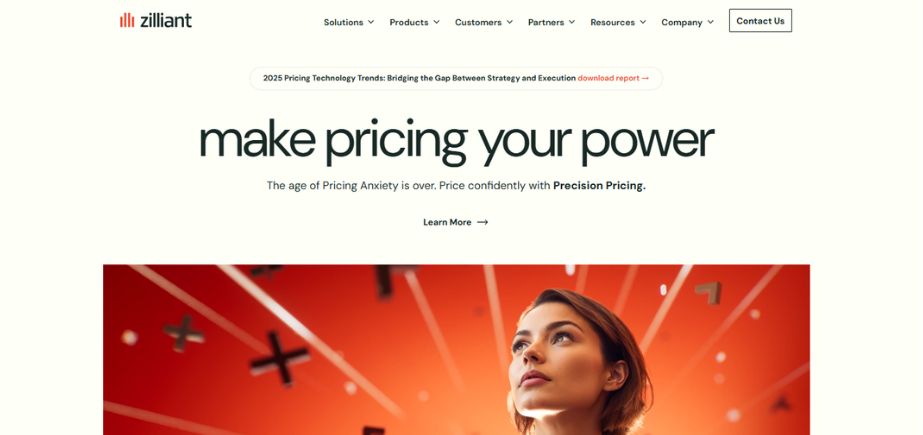
Zilliant is a B2B pricing and revenue optimization software that aims to enable businesses to enhance their margins and sales efficacy. It offers real-time price advice, deal execution, and predictive analytics to guarantee smart pricing choices. Zilliant is an AI- and machine-learning-based solution that helps identify revenue opportunities and remove pricing inconsistencies. It is particularly useful in sales forces because of its seamless integration with CRMs such as Salesforce. Zilliant is most applicable to such industries as manufacturing, distribution, and chemicals. Its advantage is in its capability to manage high-volume, complex transactions, but it might not be apt to use cases connected with retail or businesses with less complicated pricing requirements.
Key Features:
- Price elasticity modeling
- Real-time pricing recommendations
- Deal management and price guidance
- Integration with CRM and ERP
- Margin improvement analytics
Pros:
- Deep B2B pricing capabilities
- Strong integration with Salesforce and other CRMs
Cons:
- May be overpowered for smaller teams
- Limited retail-focused functionality
Pricing:
Available upon request (custom).
Who Should Use It?
B2B companies in manufacturing, distribution, and industrial sectors.
3. Pricefx
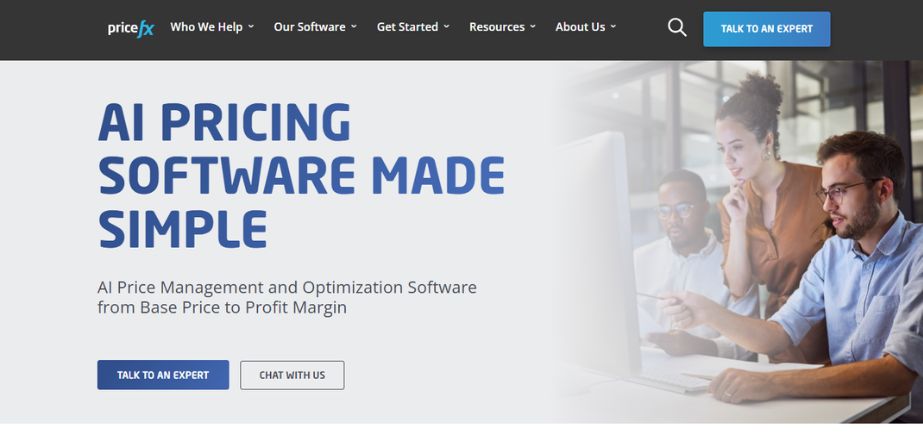
Pricefx is a pricing optimization software, cloud-native, which provides enterprises with quick and modular pricing solutions. Its suite consists of pricing analytics, price optimization, rebate management, and CPQ integration. Pricefx is flexible and scalable, featuring real-time price changes and simulations. It assists companies in simplifying pricing processes and achieving the best margins and competitiveness. The solution is built to fit into any industry, particularly B2B and manufacturing. Pricefx deploys AI-supported pricing models and provides high integration strength, which allows for making data-supported decisions much quicker. While powerful, it may require technical expertise during setup. It would be best suited to large organisations that are seeking agile and enterprise-ready pricing software.
Key Features:
- Real-time pricing and CPQ integration
- Promotion and rebate management
- Price simulation and analytics
- AI-driven insights and forecasting
- Modular architecture
Pros:
- Highly flexible and modular platform
- Strong real-time pricing engine
Cons:
- Can be complex to configure initially
- Premium pricing
Pricing:
Quote-based pricing model.
Who Should Use It?
Mid-to-large enterprises needing real-time dynamic pricing and promotions tools.
4. Vendavo
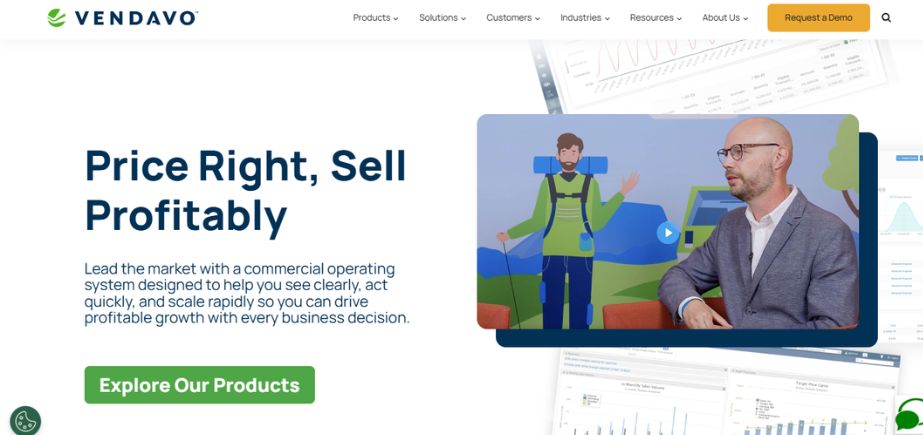
Vendavo offers B2B price optimization and commercial excellence software to enhance customer value and profitability. The platform has deal pricing, price segmentation, margin analysis, and value-based selling tools. The analytics features provided by Vendavo enable businesses to uncover pricing inefficiency and make the most of global markets. It can be effectively applied to such industries as manufacturing, chemicals, and high-tech. It can also be integrated with ERP systems to provide consistency in pricing across the various sales channels. Although implementation may require some time, returns are high in the case of complex organizations. Vendavo enables pricing and sales professionals to carry out strategic decisions that enhance margins and at the same time meet the needs of the customers.
Key Features:
- Price optimization and segmentation
- Profitability analytics
- Commercial excellence tools
- Customer value management
- Sales performance metrics
Pros:
- Advanced margin analysis tools
- Designed for B2B complexity
Cons:
- Interface not as modern as competitors
- Long implementation time
Pricing:
Custom pricing based on scale.
Who Should Use It?
Industrial, chemical, and life sciences companies with complex pricing structures.
5. Omnia Retail
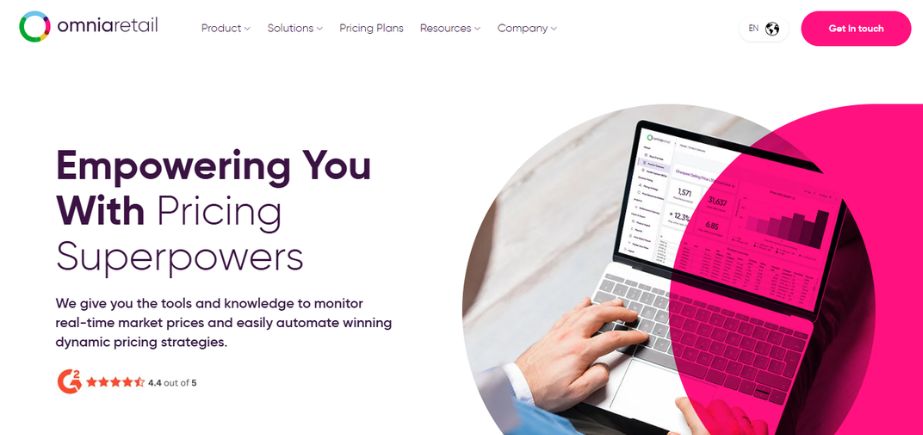
Omnia Retail is a dynamic pricing solution targeted at retailers and online stores. It is a rule-based and market-data-driven automation of pricing that helps companies react fast to competitor activity and customer demand. The software consists of such features as automation of pricing, analysis of price elasticity, and monitoring of competitors. The strong side of Omnia is its ease of use and retailer-oriented tools. It facilitates omnichannel pricing and ensures that retailers become more profitable without having to do things manually. Although it is not as applicable in B2B settings, it works well in busy retail markets. Omnia is perfectly suited to web merchants and store chains that want to remain competitive and price intelligently.
Key Features:
- Dynamic and competitor-based pricing
- Repricing automation
- Category and assortment management
- Promotion planning
- Market trend monitoring
Pros:
- Strong retail and e-commerce focus
- Easy-to-use interface
Cons:
- Less suitable for B2B applications
- Limited analytics depth compared to enterprise tools
Pricing:
Starts at €399
Who Should Use It?
Online retailers, marketplaces, and pricing teams in retail chains.
6. Pricemoov
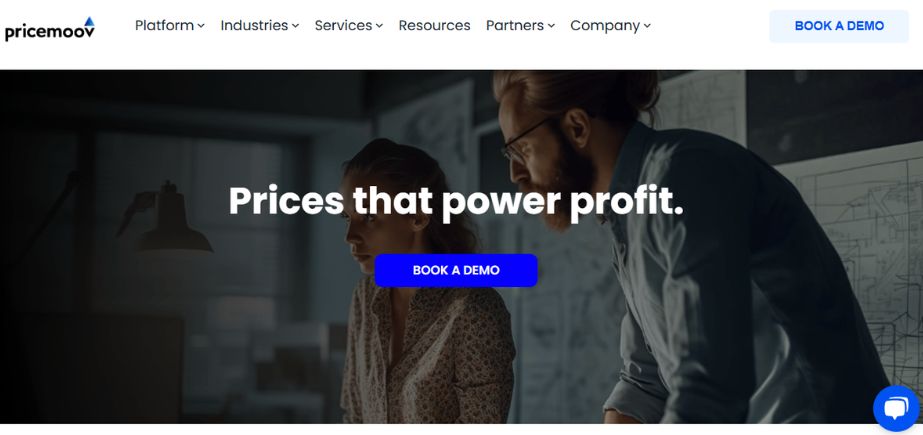
Pricemoov is a SaaS pricing solution dedicated to companies that need centralized and flexible price management. It allows users to establish, model, and optimize pricing strategy in a single user-friendly dashboard. The main characteristics are the price simulation, performance monitoring, and the multichannel syncing. Pricemoov can be applied especially in retail, logistics, and distribution. It simplifies pricing processes and fosters collaboration between teams. It can be easily implemented, and may not have the depth of analytics that is available in the enterprise-grade tools, but it will appeal to SMEs and mid-sized businesses due to its simplicity. Pricemoov enables teams to price optimize, clearly, nimbly, and with a minimum of technical complexity.
Key Features:
- Centralized pricing database
- Price simulation and what-if analysis
- Performance dashboards
- Multichannel pricing control
- Customizable workflows
Pros:
- User-friendly interface
- Good for multichannel businesses
Cons:
- Limited depth for highly complex pricing needs
- Newer player with fewer enterprise integrations
Pricing:
Custom quotes based on usage.
Who Should Use It?
SMEs, retailers, and distribution companies looking for collaborative pricing management.
7. BlackCurve
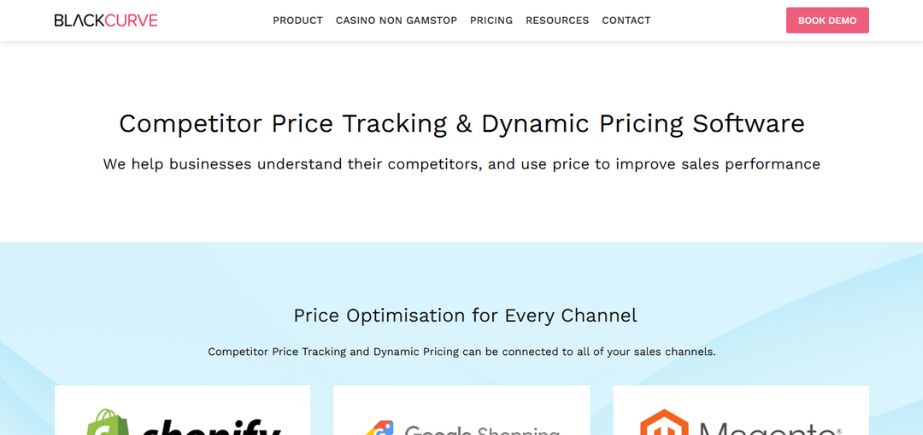
BlackCurve is an e-commerce and direct-to-consumer brand-optimized pricing platform. It allows companies to employ AI and automation to experiment, optimize, and enhance prices by product and channel. Notable functions are competitor price monitoring, pricing rules as well as A/B price testing. The platform offers insight based on data to ensure maximum profit margins and revenue growth. BlackCurve perfectly fits online merchants that require a dynamic solution to swift-paced online markets. It’s easy to implement and offers excellent flexibility. Nevertheless, it might not have profound integrations to enormous businesses or B2B companies. Recommended when the e-commerce company wants to become more intelligent in its pricing.
Key Features:
- Automated price testing and A/B pricing
- Competitor tracking
- Pricing rules engine
- Real-time pricing adjustments
- Price performance analytics
Pros:
- Designed specifically for online retail
- Easy to deploy and test pricing strategies
Cons:
- Not ideal for B2B or large enterprises
- Fewer integrations than major competitors
Pricing:
Upon request.
Who Should Use It?
E-commerce businesses, especially SMEs and direct-to-consumer brands.
8. IntelligenceNode
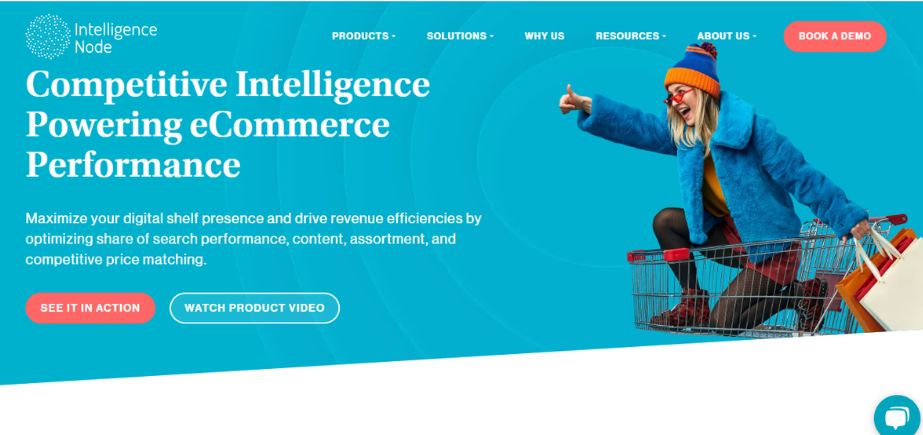
IntelligenceNode is a retail pricing intelligence platform powered by AI that provides real-time competition pricing data and market analysis. It tracks millions of SKUs and offers benchmarking tools so that retailers can respond promptly to any competitor action. Notable ones are the dynamic pricing recommendations, trend identification, and analytics dashboards. IntelligenceNode is fashion, electronics, and FMCG industry-specific, quick to deploy, and very accurate. Although it is the best in competitive intelligence, it lacks detailed pricing management tools such as optimization engines. It is suitable where retailers who require the right market visibility and price dynamic capabilities to stay competitive in the dynamic retailing markets.
Key Features:
- Real-time market monitoring
- Competitor pricing insights
- Price benchmarking and alerts
- Smart pricing suggestions
- Category-level analytics
Pros:
- Extensive competitive intelligence
- Fast implementation and easy UI
Cons:
- Focused on retail only
- Limited rule-based pricing control
Pricing:
Custom pricing.
Who Should Use It?
Retailers and e-commerce companies needing real-time market intelligence.
9. Revionics (by Aptos)
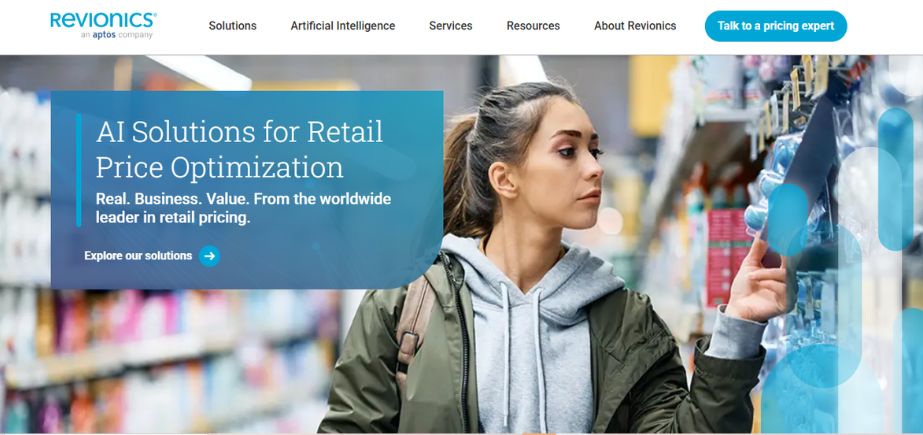
Revionics (an Aptos company) provides lifecycle pricing optimization to retailers, including base, promotional, and markdown pricing. It applies AI and machine learning to forecast customer demand and price elasticity to recommend ideal prices during the life of a product. Notable functions are rules-based pricing, elasticity modeling, and promotion planning. Revionics helps grocery, fashion, and mass retail brands to be profitable and competitive. It also couples nicely with retail systems and assists in automating price decisions. It is Retail-optimised, but not B2B or non-retail-optimised. Revionics suits large-scale retailers that are interested in end-to-end price optimization supported by AI.
Key Features:
- Lifecycle pricing (base, promo, markdown)
- AI-driven pricing insights
- Rule-based pricing engine
- Elasticity modeling
- Advanced promotion planning
Pros:
- Deep retail expertise
- Great for markdown and promo management
Cons:
- Focus limited to retail sectors
- Requires strong data input for accuracy
Pricing:
Quote-based; enterprise pricing.
Who Should Use It?
Supermarkets, apparel chains, and large-format retailers.
10. Quicklizard
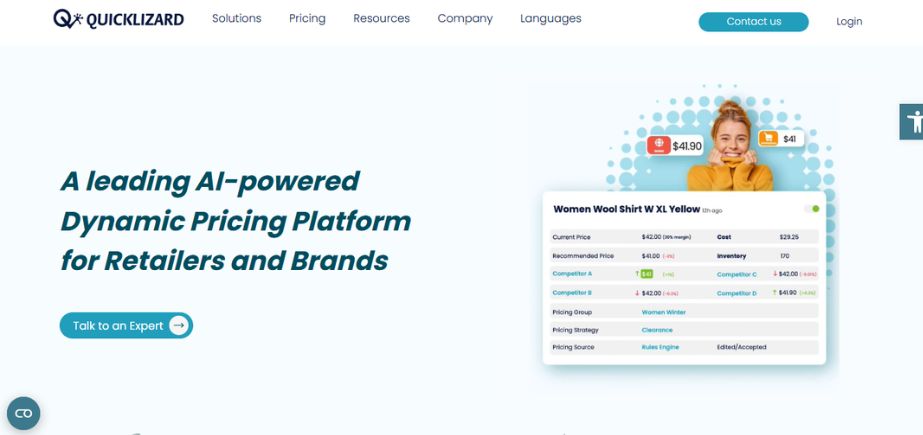
Quicklizard is a real-time pricing engine that employs Artificial intelligence and rule-based logic to optimize pricing in both digital and physical retail environments. It has dynamic pricing tools, A/B testing, lifecycle pricing, and omnichannel management. Built to be nimble, Quicklizard is ERP, POS, and e-commerce integrated. Its main advantage is that it is experimental and quick in updating prices, thus fitting well in fast-moving retailing settings. Although powerful, it might need to be technically configured to be used maximally. Quicklizard is most applicable to big box stores and online merchants who want to use the power of automation and analytics to help them have a competitive advantage when it comes to pricing.
Key Features:
- Dynamic pricing engine
- Rule and AI-based pricing
- Real-time integration with online/offline channels
- Product lifecycle pricing
- A/B price testing and analysis
Pros:
- Powerful omnichannel capabilities
- Great for experimentation and testing
Cons:
- Can require training to use fully
- May be too advanced for small businesses
Pricing:
Custom pricing.
Who Should Use It?
Omnichannel retailers, large e-commerce stores, and pricing analysts.
Comparison Between Best Pricing Optimization Software
Here’s a comparison table of features, pricing, use cases, and websites for the top pricing optimization software:
| Software | Key Features | Pricing (Approx.) | Use Cases | Website |
| PROS | AI-based pricing, dynamic pricing, real-time optimization, segmentation | Custom pricing (Enterprise-level) | Manufacturing, travel, B2B | https://pros.com |
| Zilliant | Price guidance, deal management, elasticity models, AI insights | Custom pricing | B2B, industrial, manufacturing, distribution | https://zilliant.com |
| Pricefx | Price analytics, CPQ, rebate mgmt, simulation engine, modular architecture | On request | Mid to large enterprises, manufacturing, retail | https://www.pricefx.com |
| Vendavo | Margin analysis, price segmentation, deal desk, B2B price optimization | Custom pricing | Chemicals, industrial, high-tech B2B | https://www.vendavo.com |
| Omnia Retail | Competitor tracking, rule-based pricing, dynamic pricing, elasticity insights | Starts from €399/month | Online retail, e-commerce | https://www.omniaretail.com |
| Pricemoov | Price simulation, central dashboard, multichannel updates, analytics | Custom pricing | Mid-sized retail, distribution, logistics | https://www.pricemoov.com |
| BlackCurve | Competitor analysis, rule-based pricing, A/B testing, margin control | On request | E-commerce, direct-to-consumer brands | https://www.blackcurve.com |
| IntelligenceNode | Competitive benchmarking, pricing intelligence, real-time analytics | Custom pricing | Fashion, FMCG, electronics retail | https://www.intelligencenode.com |
| Revionics | Lifecycle pricing, promo planning, markdown optimization, AI engine | Custom (Tiered plans for retail) | Grocery, fashion, mass retail | https://www.revionics.com |
| Quicklizard | Dynamic pricing, omnichannel support, A/B testing, automation | Custom pricing | Large-scale retailers, omnichannel brands | https://www.quicklizard.com |
Conclusion
Price optimization software has become essential to companies that are interested in ensuring that they reap maximum profits, remain competitive, and also dynamically adjust according to their needs in their markets. The PROS and Pricefx are the most suitable options in the case of large enterprises that require a highly scalable and adaptable platform because they provide AI-driven insights and deep analytics. Tools such as Omnia Retail or Prisync can assist retailers and e-commerce businesses with real-time competitor prices and automatization.
PriceMoov offers affordable, simple-to-implement plans that will suit small to medium-sized companies. Zilliant or Vendavo might be more suitable for B2B firms with intricate pricing structures due to their specialized capabilities. Intelligence Node and NetRivals are suitable options to go for multichannel support as a marketplace retailer. The reason is that the best software is relative to your business, price model, and strategic objectives, and therefore you need to make sure that you match the option with your business size, requirement, and integration needs.
FAQs
What is pricing optimization software?
Pricing optimization software represents a tool that is based on data, algorithms, and, in some cases, AI that assists companies in finding the optimal pricing of a product or service. It evaluates aspects such as demand, cost, competition, customer behavior, and market trends to advise on the best pricing strategies to achieve the best revenue, margins, or market share.
2. Who should use pricing optimization tools?
Helping any size of business, however, pricing optimization software is particularly helpful to retailers, manufacturers, distributors, e-commerce businesses, and B2B businesses that have a large product catalog or have variable demand. It suits the teams that seek to automate their prices and enhance their profits.
3. How does pricing optimization software work?
These are tools that gather and measure data on past sales, pricing strategies of competitors, market demand, and customer behavior. The software makes price recommendations or automatically adjusts prices across channels on a real-time basis using machine learning or rules-based logic.
4. Is pricing optimization software suitable for small businesses?
Pricing platforms have scalable solutions available to small and mid-sized businesses (SMBs), the answer is: Yes. Such tools as BlackCurve or Pricemoov are simple and convenient, which means that even a team that lacks profound technical knowledge can use them.
5. What are the key advantages of pricing optimization software?
The main advantages are the increase in the profit margin, the ability to set more competitive prices, the decrease in the amount of work done manually, the possibility of having prices updated in real-time, and the enhancement of pricing consistency between the different channels. It can also facilitate quicker reaction to market changes and better-informed decisions.
